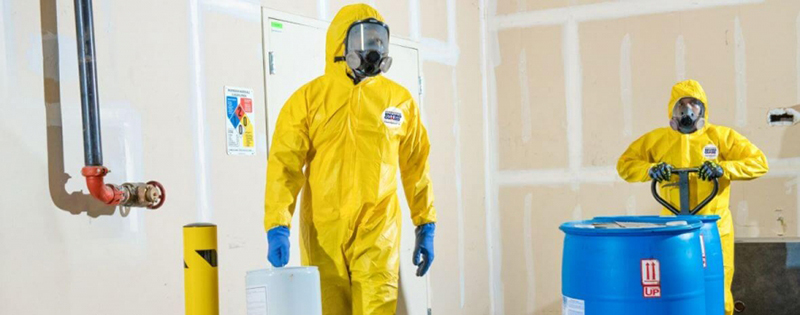Chemical protective clothing:Understanding the Different Levels of Protection

Chemical protective clothing is an essential piece of equipment for workers in various industries, including pharmaceuticals, manufacturing, and chemical processing. There are four levels of chemical protective clothing that provide different levels of protection against chemical hazards.
The first level is Level A, which offers the highest level of protection against chemical exposure. It includes a fully encapsulated chemical-resistant suit with a self-contained breathing apparatus (SCBA). Level A protective clothing is designed for use in situations where the highest level of respiratory, skin, and eye protection is required. It is typically used for emergency response situations where there is a risk of exposure to toxic gases or chemicals.
The second level is Level B, which offers less protection than Level A but still provides significant protection against chemical hazards. Level B protective clothing includes a chemical-resistant suit with a hood, gloves, and boots. It is designed to protect the wearer from chemical splashes and spills and is typically used in situations where there is a risk of exposure to airborne chemicals or when handling hazardous materials.
The third level is Level C, which offers minimal protection compared to Levels A and B. Level C protective clothing includes a chemical-resistant suit, gloves, and boots. Unlike Level A and B, Level C protective clothing does not include respiratory protection, and instead, workers are required to use a separate air-purifying respirator. Level C protective clothing is typically used in situations where there is a low risk of exposure to hazardous chemicals.
The fourth level is Level D, which provides the lowest level of protection against chemical hazards. It includes ordinary work clothing such as uniforms, coveralls, or lab coats. Level D protective clothing is not chemical resistant and is not suitable for situations where there is a risk of exposure to hazardous chemicals.
In conclusion, the four levels of chemical protective clothing provide varying degrees of protection against chemical hazards. Employers must assess the level of risk to their workers and provide the appropriate level of protective clothing to ensure the safety of their employees. It is essential that workers receive proper training in the use and maintenance of protective clothing to maximize their effectiveness.










